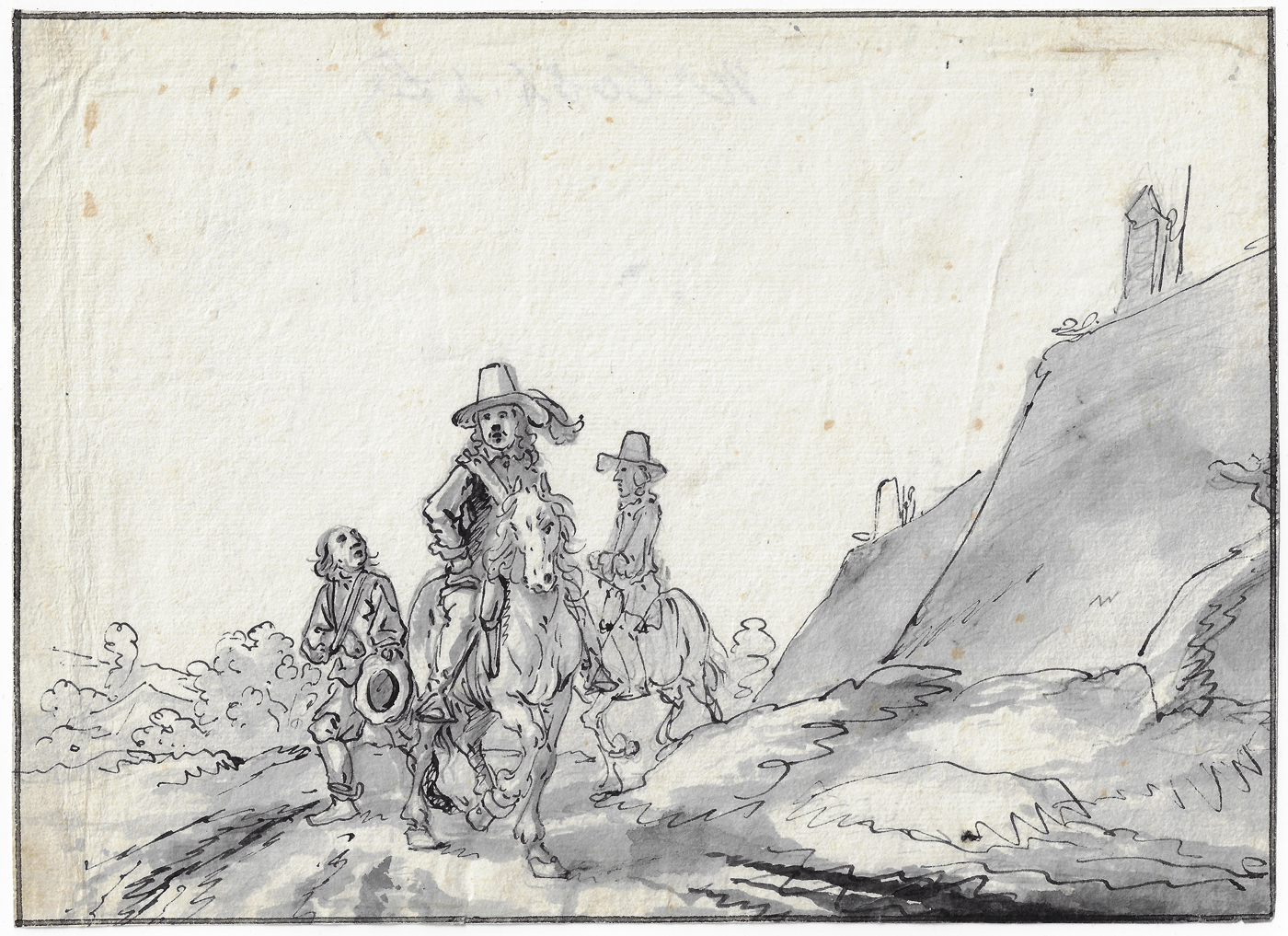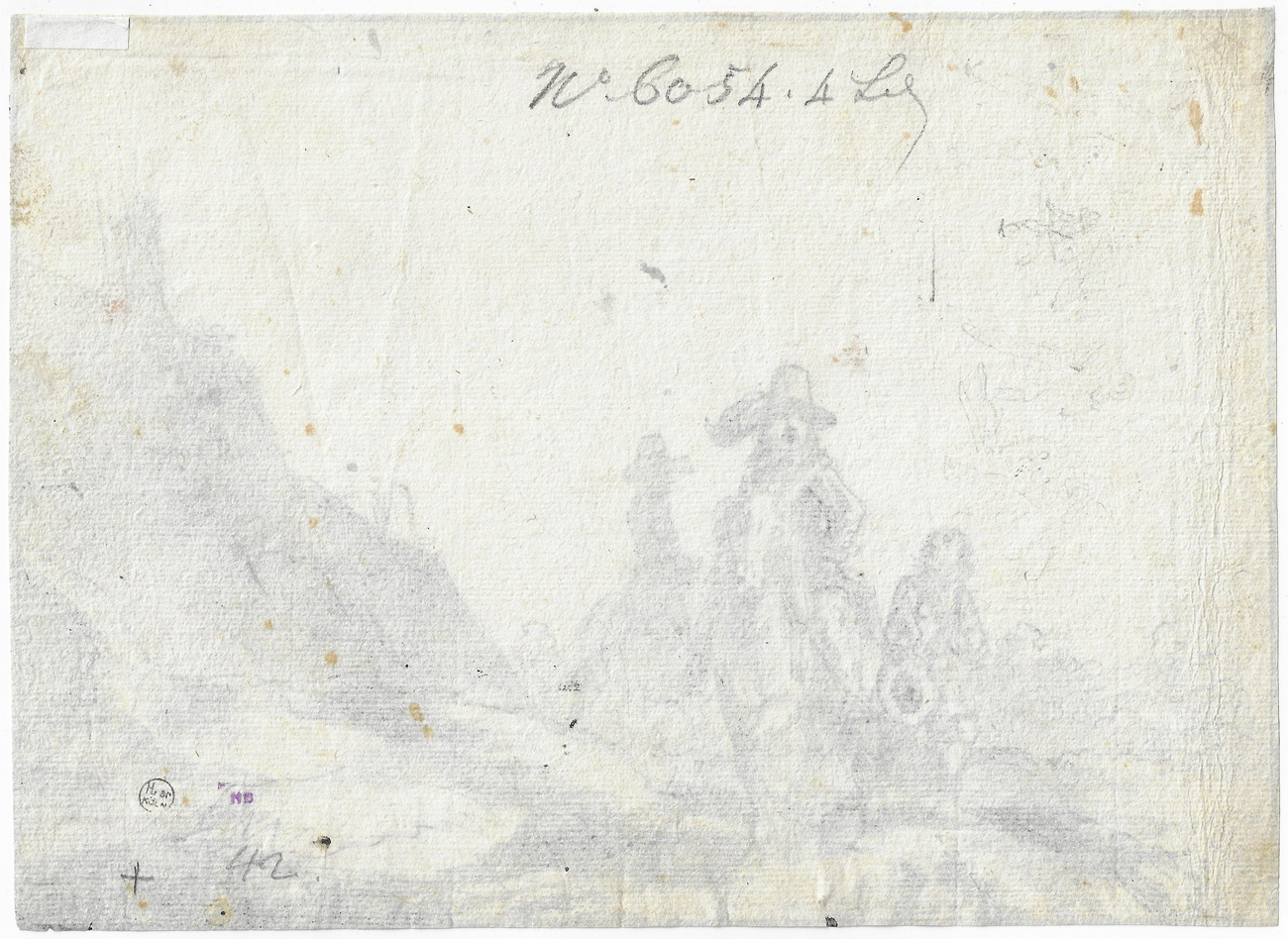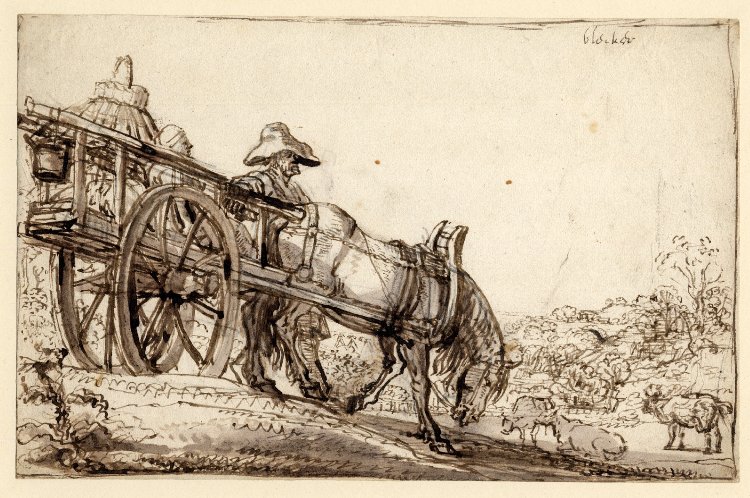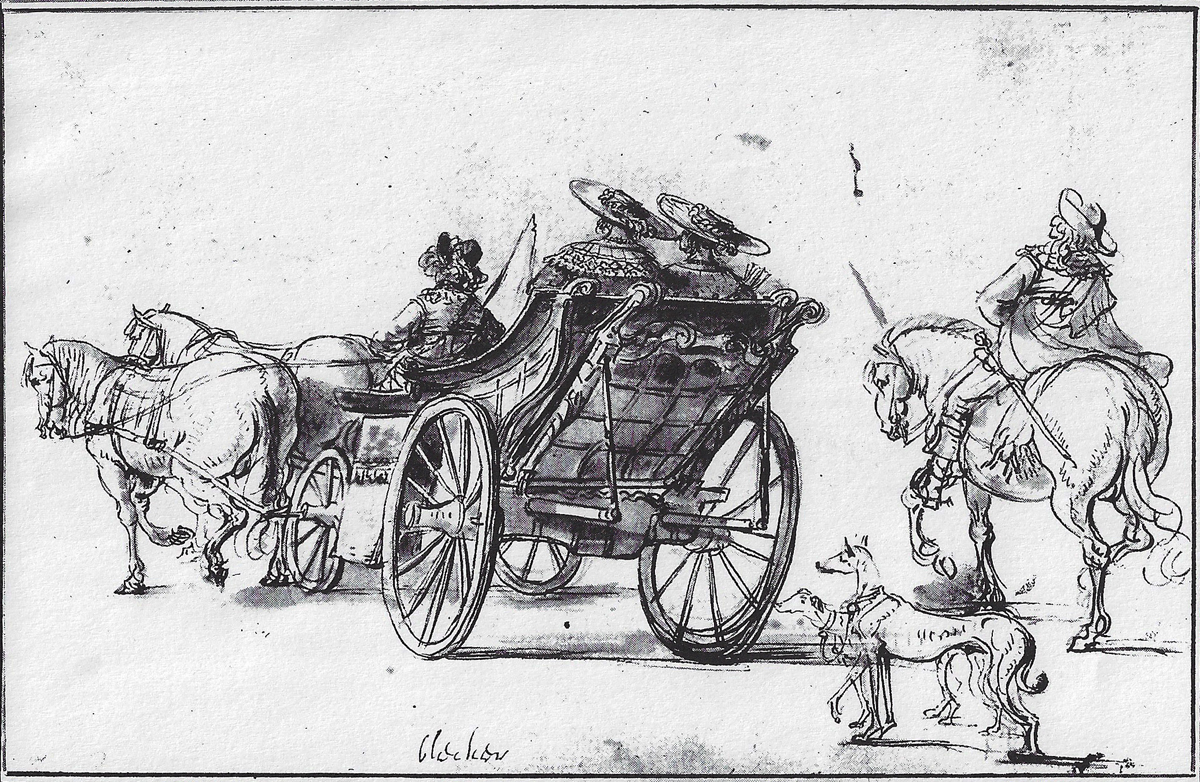GERRIT CLAESZ BLEKER (Haarlem 1592/93 – 1656 Haarlem)
Gerrit Claesz Bleker (Haarlem 1592/93 – 1656 Haarlem)
Two Riders and a Beggar in a Landscape
Pen and black ink, grey wash, black chalk, 163 x 224 mm (6.4 x 8.8 inch)
Provenance
~ Heinrich Lemperts Sr (1816–1898), Cologne (Lugt 1337)
~ Unknown collection, probably Germany (Lugt 3499)
~ Anonymous auction, Sotheby’s, Amsterdam, 16 November 2005, lot 10, with colour repr.
~ Private collection, Germany
***
Gerrit Claesz Bleker was born in Haarlem around 1592 and was most probably taught by Claes Moeyaert (1591–1669).1 Bleker was first mentioned as an independent painter in 1622 and became a member of the guild of St Luke in 1634. By 1625 he was already settled as a painter of landscapes in Haarlem, and was mentioned as such in the description of the town by Samuel Ampzing of 1628, together with Salomon van Ruysdael.2 Together with his brother Jan, he was a musketeer in the St Joris civic guard. From around 1634 to 1654 he lived and worked in Amsterdam on the Keizersgracht; he then bought a country house in Groenendaal, near Heemstede, named ‘De Driesprongh’ from Pieter van de Venne, a cousin of Bartholomeus van der Helst. A neighbouring house, ‘Het Lam’, was owned by Jan Miense Molenaer and Judith Leyster. The artist’s son Dirk Bleker also became a painter, and his daughter Maria married the horse painter Jacobus Koolen.
Bleker is little known as a draughtman. Only a few sheets by him are preserved in the major European print rooms. Two drawings by him are in the British Museum, London, one sheet depicting The Finding of Moses,3 and A Peasant and a Horse-Drawn Cart (fig.),4 which is a preparatory study for Bleker’s etching of 1643 (Hollstein 12). Another preparatory study for an etching, Landscape with a Piping Shepherd (Hollstein 6) is in the Frits Lugt collection, Fondation Custodia, Paris.5
The present sheet was first identified as a work by Bleker by Dr Hans-Ulrich Beck when it was sold at Sotheby’s in Amsterdam in 2005. It was compared by Dr Beck to a sheet with a the drawing Rider and a Couple in a Horse-Drawn Carriage, preserved in the Albertina in Vienna (fig.).6 Both the London and the Albertina sheets bear an early inscriptions ‘bleeker’, possibly the artist’s own signature.
1. For the artist, see I. van Thiel-Stroman, Painting in Haarlem 1500-1850. The collection of the Frans Hals Museum, Ghent/Haarlem 2006, pp. 109-10.
2. ‘How could I overlook Bleker and Ruysdael, / Who are good in landscapes, and moreover, in figures’, cited by Van Thiel-Stroman, op. cit., p. 109.
3. Black chalk, pen and brown ink, brown wash, 232 x 317 mm; inv. no. SL,5236.123; A.M. Hind, Catalogue of Dutch and Flemish Drawings preserved in the Department of Prints and Drawings in the British Museum, 4 vols, London 1915-31, cat. no. 1.
4. Black chalk, pen and brown ink, brown wash, 193 x 299 mm; inv. no. SL,5236.42; Hind, op. cit., cat no. 2.
5. Pen and brown ink, brown, grey and green wash, 142 x 212 mm; inv. no. 1972-T.37; exh. cat. Acquisitions, Paris (Fondation Custodia) 1974, cat. no. 4.
6. Grafische Sammlung Albertina, Vienna, inv no. 10182; Walther Bernt, Die niederländischen Zeichner des 17. Jahrhunderts, Munich 1957-58, cat. no. 68.




